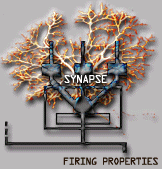 EXPERIENCE AND PHYSICAL-
EXPERIENCE AND PHYSICAL-PSYCHOPHYSICS
 EXPERIENCE AND PHYSICAL-
EXPERIENCE AND PHYSICAL-A concrete example of what is meant by consciousness, strictly self-consciousness, is given by Kielhofer G and Fisher AG, Mind-Brain-Body Relationships, in Fisher AG, Murray EA and Bundy AC, Sensory Integration, F.A. Davis (1991), when they describe the experience of "fun" of young Allison as she enjoys swinging with a big swing at the park , while her peers and parents perceive her performance. This case helps to appreciate how such a multivariable experience is conscious, and how consciousness is multivariable experience of which one is aware. "The brain makes it possible for Allison to learn how to move her body in order to propel herself on the big swing, to evaluate her own performance, and to become aware of how others view her newfound ability. But what she has learned to do, the particular content of her memories, and her self-reflections, are a product of her unique experience in interacting within a given physical environment and culture."
Psychophysics is the consideration of multivariable mappings between objective events in the environment (the park, the swing, the peers, the parents) and subjective levels of human sensory responses (the awareness, the playing sensations, the fun). Allison is exploring "fun" within the limits of "danger stimuli" of sliding, falling, feeling dizzy.
The body-brain is governed by physical, chemical and biological laws and the mind is governed by psychological laws (Popper and Eccles, 1977). Biological laws are complex and messy, and should yearn towards simple and basic principles (David J. Chalmers), for instance those offered by biothermodynamics. The hard problem is about psychological laws, still more multivariable and more messy: here the hard question asks if they are, or not, reducible to physical-psychophysical mechanisms.
Psychophysics is a discipline that refers primarily to physical arguments on such conscious experiential states. Unless one is a zombie or feels like one when becoming drowsy, consciousness is our subjective typically mixed mental state between two succesive sleep episodes, while we feel mostly wide awake and with intensive experiences. It is basically what happens when one finds out that something is happening inside us: an inner voice that expresses a flow of high level thoughts, emotion and, perhaps, preplanning of different futures. It has relation to true intelligence. A conscious being shows his particular personal operating system, in the computational jargon, as an overall intelligent and emotional behavior. Consciousness is private to that person. The person senses that he is related to his own pains, tickles, itches, thoughts and feelings, and unrelated to the way others sense them. Consciousness is (perhaps) a physical-psychophysical multivariable phenomenon, explainable in the future with the help of an extended physical theory. If somebody asks what it feels like to be a stone, there is no "real" answer to that question. Stones belong to common Physics, which ignores the subject. But if somebody asks what it feels like to speak to a knowing audience, we can give a "real" and personal answer. Now the subject, if physical-psychophysical, should belong (perhaps) to an extended Physics, in any case not to common Physics.
NEXT
OTHER
2.feb.1999
Pulsar tecla de vuelta
Glosario de Carlos von der Becke, where some specialized words are explained.